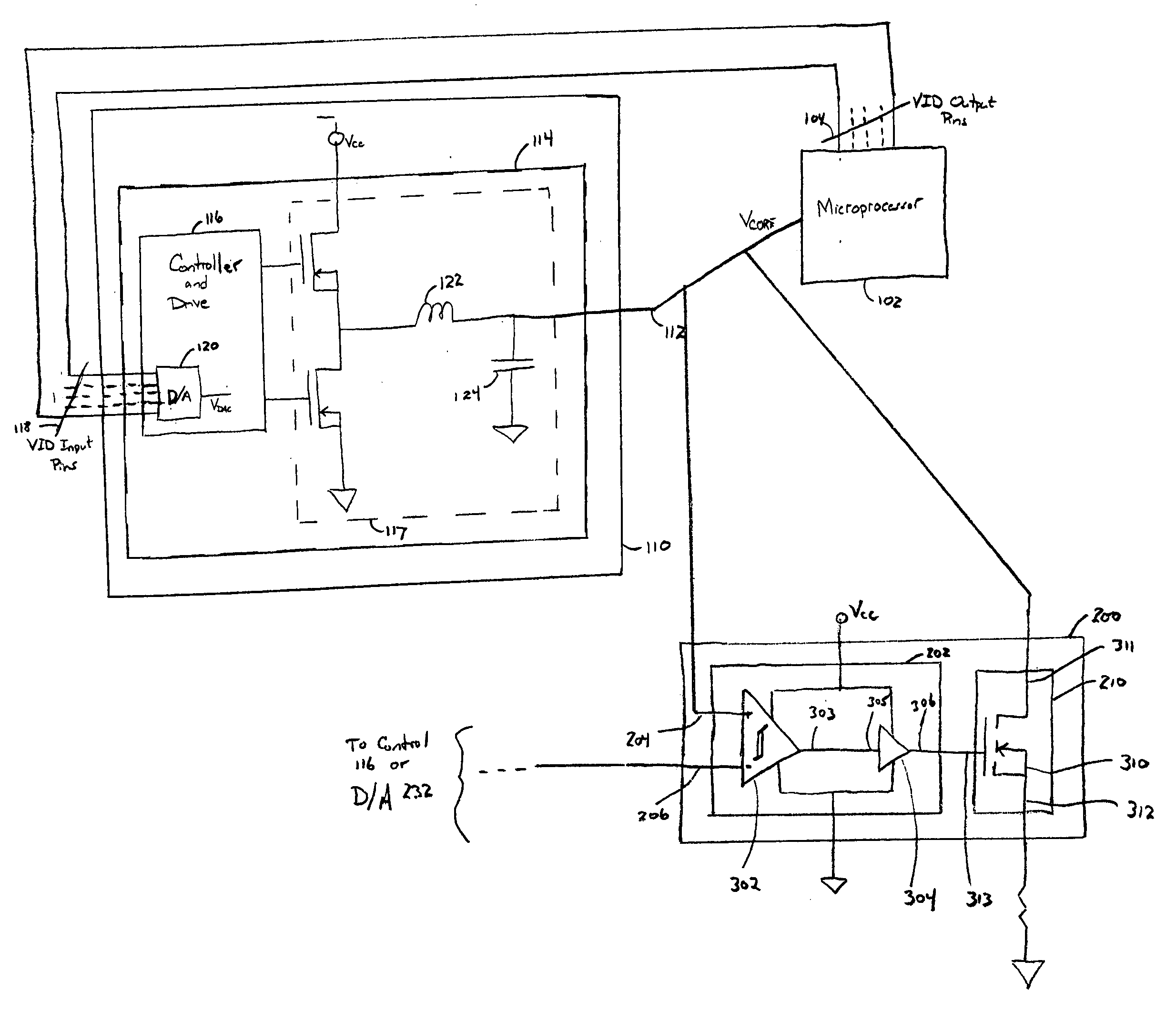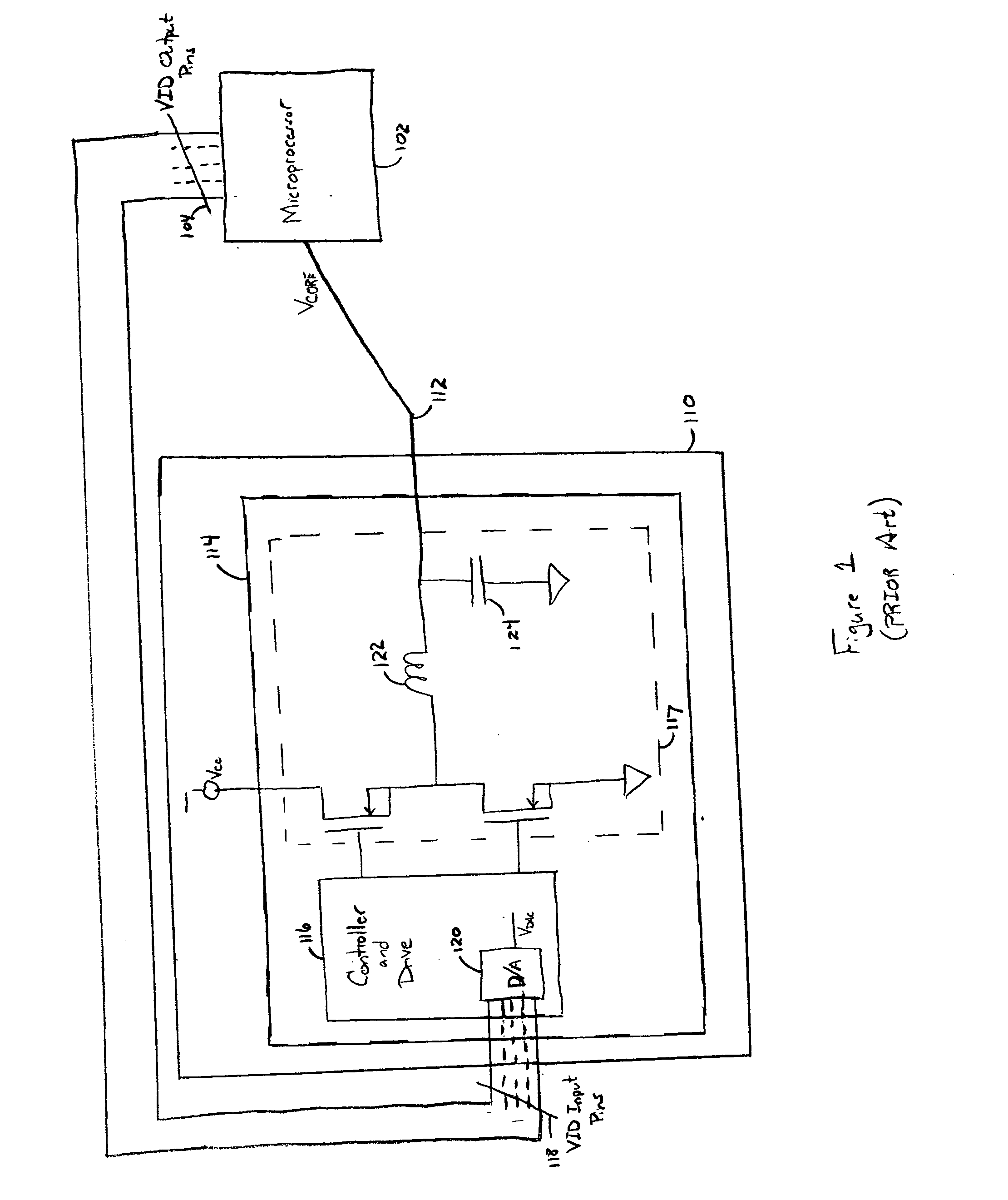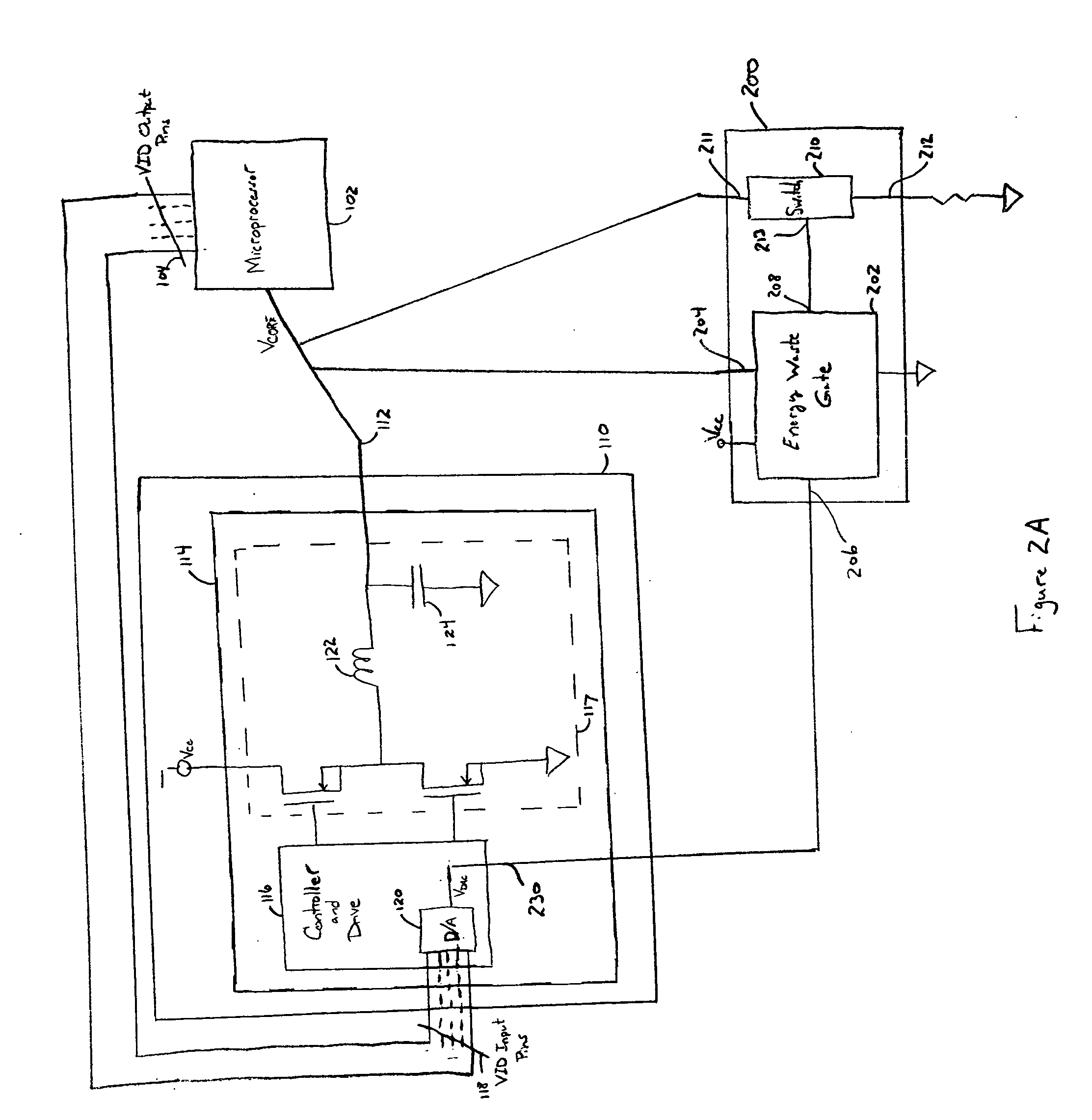Regulator for reducing power supply transient voltages
a technology of transient voltage and power supply, which is applied in the direction of power supply for data processing, liquid/fluent solid measurement, instruments, etc., can solve the problems of large power requirements, overshoots that may possibly exceed the operating specifications of the microprocessor, and complex load of the advanced microprocessor described above, so as to reduce the computational workload of the computer and reduce the power demand
- Summary
- Abstract
- Description
- Claims
- Application Information
AI Technical Summary
Benefits of technology
Problems solved by technology
Method used
Image
Examples
Embodiment Construction
[0025] Referring to FIGS. 2A, 2B, 2C, and 2D, there is shown regulator 200 according to an embodiment of the invention. Regulator 200 includes energy waste-gate 202 and ground path switch 210. Switch 210 may include an input lead 211 connected to output 112 of power supply 110, an output lead 212 connected to ground, and a control lead 213 connected to an output 208 of energy waste-gate 202. Through the control of switch 210, the switch provides a switchable path to ground for power supply output 112.
[0026] Energy waste-gate 202 may include a sense line input lead 204, a reference line input lead 206, and an output lead 208. Output lead 208 is connected to control lead 213 of switch 210 and in this way, waste-gate 202 controls switch 210, opening and closing the path to ground. Waste-gate 202 uses reference line 206 to sense the desired operating voltage (i.e., the desired voltage set-point) that a microprocessor requires at the power supply output 112. As indicated, this voltage s...
PUM
 Login to View More
Login to View More Abstract
Description
Claims
Application Information
 Login to View More
Login to View More - R&D
- Intellectual Property
- Life Sciences
- Materials
- Tech Scout
- Unparalleled Data Quality
- Higher Quality Content
- 60% Fewer Hallucinations
Browse by: Latest US Patents, China's latest patents, Technical Efficacy Thesaurus, Application Domain, Technology Topic, Popular Technical Reports.
© 2025 PatSnap. All rights reserved.Legal|Privacy policy|Modern Slavery Act Transparency Statement|Sitemap|About US| Contact US: help@patsnap.com



